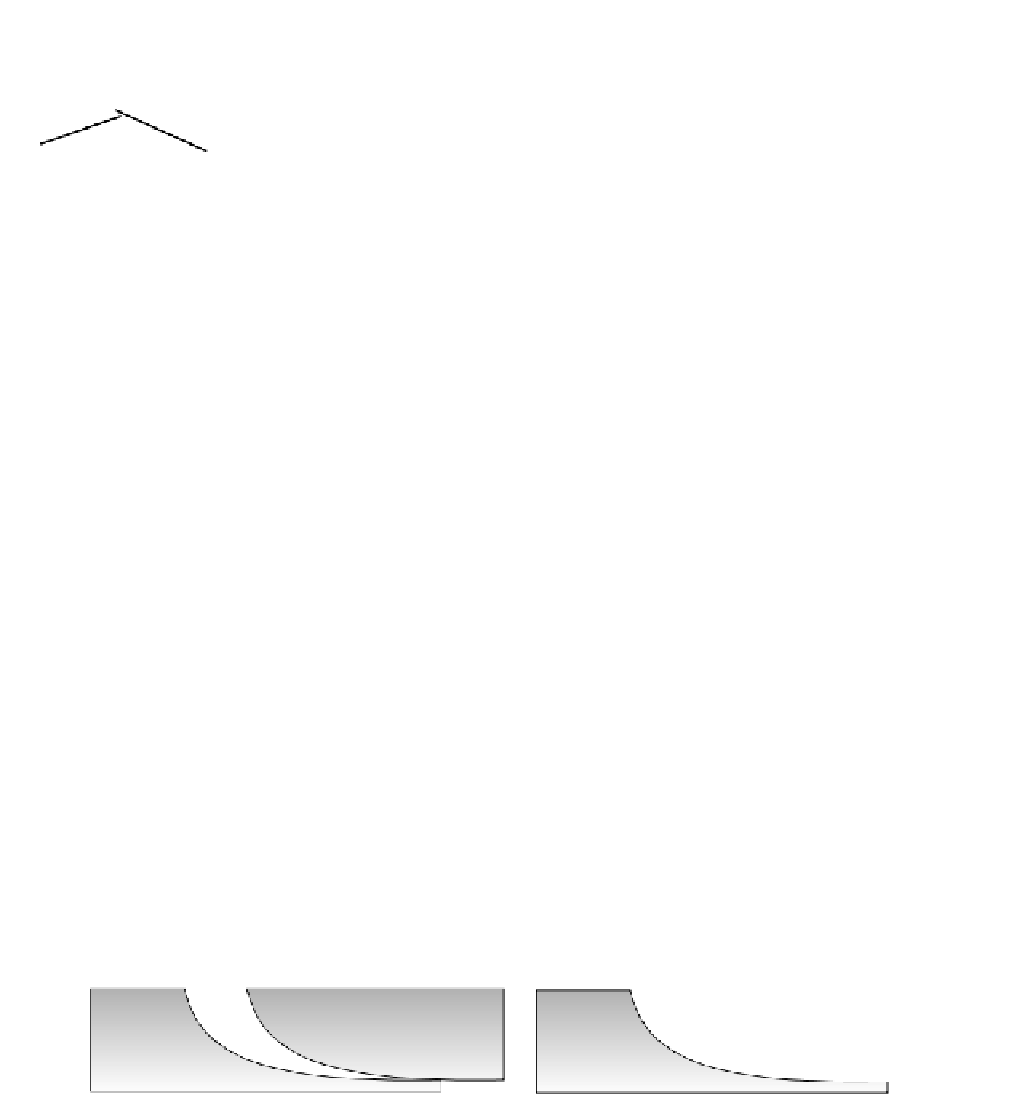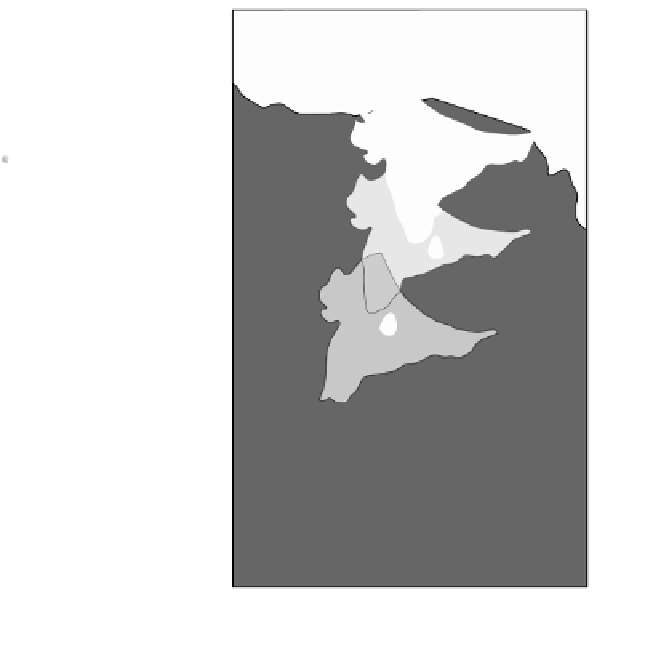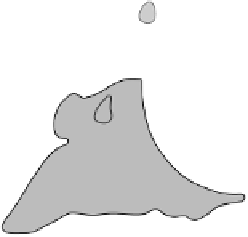Geoscience Reference
In-Depth Information
Iberian Peninsula during the Mesozoic, when the opening
of the Bay of Biscay took place. Displacement vectors have
different magnitudes, being zero in the rotation axis and
systematically larger away from the rotation axis. Vector
orientations are different in a predictable way. To fully
describe movement by rotation, the orientation of the
rotation axis has to be defined the magnitude of the
rotation in degrees, and the sense of rotation as clockwise
z
(a)
40º
z
(b)
y
30º
x
0 Ma
y
20º
10 Ma
x
10º
(c)
z
38 Ma
0º
10º
y
55 Ma
x
20º
(d)
(e)
z
z
30º
71 Ma
y
40º
x
y
x
50º
60º
70º
80º
90º
100º
Fig. 3.77
The four basic displacements described in kinematics.
(a) Original nondeformed object, a dice; (b) translation (linear
movement); (c) rotation (change in orientation); (d) dilation
(change in volume); (e) distortion (change in shape).
Fig. 3.78
Displacements at plate tectonics scale. The linear
translation or drift of India toward the north.
(a)
(c)
(b)
(d)
Fig. 3.79
Several examples of displacements applied to kinematic models of listric faults (Sectoin 4.15). (a) Original pre-fault position; (b) rigid
translation of a block; (c) rigid rotation of a block; (d) Nonrigid distortion or inner deformation of the block to form a roll-over.




























































































































































































































































































































































































































































































Search WWH ::

Custom Search